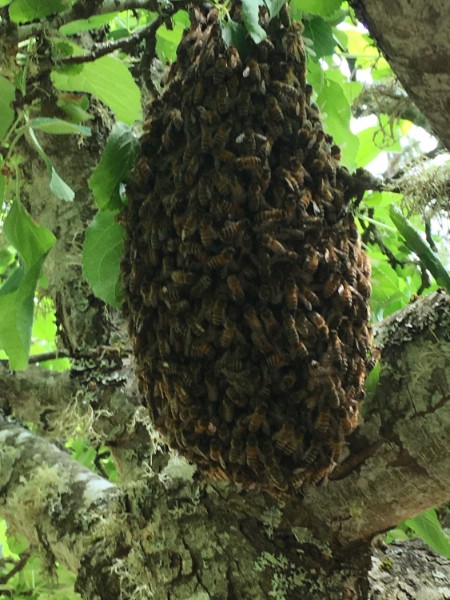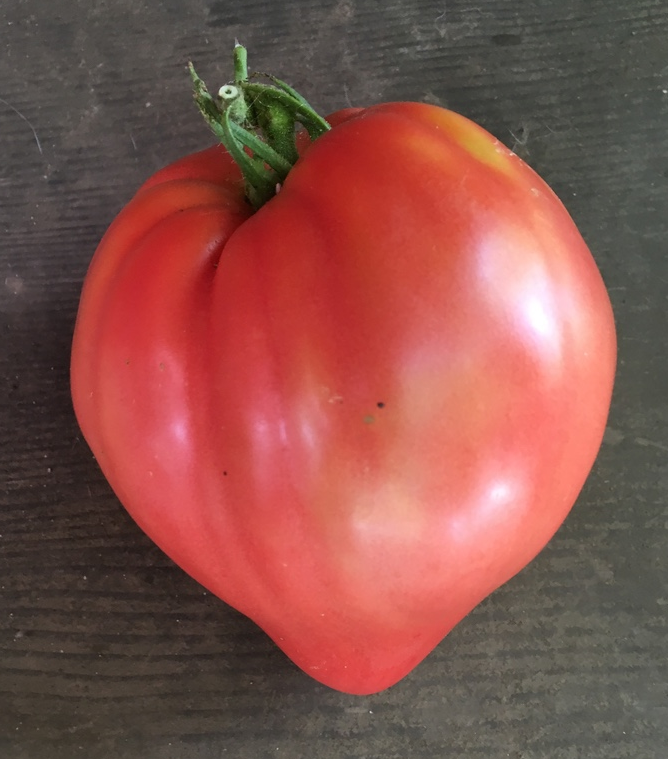 Honeybee swarm
Honeybee swarm
Bumblebees
Gales Meadow Farm has been a Flagship Farm for the Oregon Bee Project since 2017. This means that staff from the Oregon Department of Agriculture have trapped and helped us to trap bees on our farm to provide data on the distribution and numbers of all the species of bees that live on our farm and its surroundings. This includes our honeybees and native bees. Oregon has more than 600 species of native bees. Most native bees are more important to pollination than the honeybees! That’s because the native bees are mostly gathering pollen, while the honeybees are mostly after nectar; the pollen is secondary to them. The ODA bee people told us that they captured six species of bumblebees at our farm. We sure see a lot of them, but the identification guides that I had are not very helpful and those critters move so quickly that it is hard to focus well enough to see the subtle differences in markings.
Yesterday, I attended a workshop on how to contribute to the Pacific Northwest Bumblebee Atlas. https://www.pnwbumblebeeatlas.org/ From the website: “The Pacific Northwest Bumble Bee Atlas is a collaborative project to track and conserve the bumble bees of Oregon, Washington, and Idaho. Our goal is to gain a better understanding of the distribution of bumble bees throughout the region. This will help us to more effectively enact conservation measures that will benefit these important native pollinators. . . Bumble bees are essential pollinators in our natural landscapes, as well as in gardens and on farms. Idaho, Oregon and Washington are home to nearly 30 species of bumble bees, and several of them face an uncertain future. The western bumble bee has declined dramatically – especially in the western portion of its range, and species like Morrison’s bumble bee and the Suckley cuckoo bumble bee are in decline.”
The workshop was fantastic. I now have a very helpful guide, a net, and a non-lethal way of studying, photographing, and identifying them.
Of course, bumblebees are only one of the native species that are important pollinators. But they are a good genus to start the Atlas project, because they are the biggest of the bees and the most “charismatic.”
Honeybee Swarms
It was Bee Week at Gales Meadow Farm. While I was thinning the Liberty apples on Monday, I noticed a bunch of bees in the apple tree, although it is no longer in bloom. I looked closer and saw a soccer ball size cluster of bees of bees on the trunk: a swarm! We think they came from one of our own hives. Robbie and Tiffany suited up in the beekeeper outfits and successfully got them into an extra hive box that had just happened to be available. The next day, we saw another swarm in the air. On their own, they settled into the hive structure that had been abandoned over the winter. I can’t help but provide you with an old rhyme from the British Isles:
“A swarm of bees in May
Is worth a load of hay;
A swarm of bees in June
Is worth a silver spoon;
A swarm of bees in July
Is not worth a fly.”
So we were given the equivalent of two loads of hay in two days! The best part of the rhyme is that a load of hay is worth about triple the value of a silver spoon in traditional rural England.
Tomato Stories

The Rogue Farm Corps, the program that provides us with our wonderful interns, is having a party and fund-raising event on Sunday June 16, 2-5pm at Kuchenhaus in SE Portland. Admission is free. The party will feature live music by the Never Strangers, a raffle / silent auction, plant starts for sale, snacks & food for sale, and more. We will be contributing ten tomato plants to the silent auction (in 2 gallon pots, since it’s close to the end of tomato planting season). Each of our contributed tomatoes is one of our unique varieties, grown from seeds that have been given to us or that we have bred at our farm. These are varieties that are not available from any but the most obscure seed companies, or not available at all commercially. I will make a laminated card telling the story of each tomato variety.
Here’s one: When we first started farming, we got some tomato seeds from a friend named Ellen, a librarian for the National Radio Astronomy Laboratory (rocket scientists!) in Charlottesville, Virginia. A neighbor, Natalie, whose grandmother had brought them from Italy, had given them to Ellen years ago. The tomato is large, meaty, and pink with a pointed end. When we saw what if looked like, we named it Italian Heart. Many of our farmers market customers have fallen in love with its classic Italian flavor and ask for it by name every year. Like many Roma-type tomatoes, it has alarmingly droopy foliage.
I will be posting tomato stories like this one on our new, up-dated, soon-to-be active farm website over the course of the season. If you share our tendency to tomato nerdiness, check it out.





